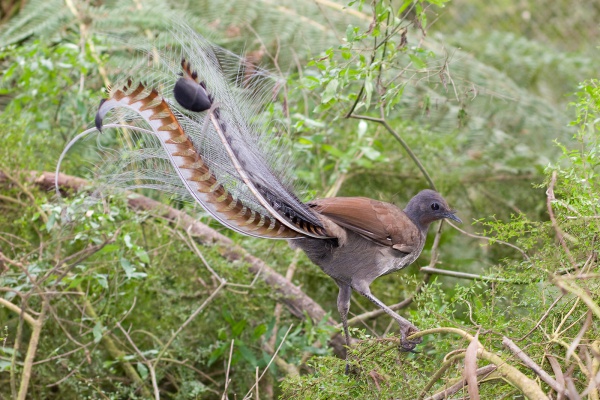Facts About Lyrebird
The lyrebird is a captivating ground-dwelling bird native to Australia, belonging to the genus Menura and the family Menuridae. These birds are celebrated for their remarkable ability to mimic environmental sounds, and the males are especially notable for their elaborate tail feathers used in courtship displays.
Lyrebirds have a storied past, with fossils indicating they have existed for approximately 15 million years. Initially classified under Galliformes, they have since been placed in their own family, Menuridae. While closely related to scrub-birds, their relationship with bowerbirds remains a topic of scientific debate.
There are two extant species of lyrebirds: the superb lyrebird and Albert's lyrebird. Both are large passerine birds that prefer terrestrial habitats due to their limited flight capabilities. The superb lyrebird, the larger of the two, inhabits the rainforests of Victoria, New South Wales, and Queensland. In contrast, Albert's lyrebird is confined to a smaller region within the Southern Queensland rainforest.
These birds are notoriously elusive and cautious, making them difficult to observe. They primarily feed on invertebrates found on the forest floor and have a distinctive breeding cycle. During the breeding season, male lyrebirds are highly territorial and perform elaborate displays to attract mates. Their vocalizations are exceptionally complex, capable of mimicking a vast range of sounds, including those produced by humans.
From a conservation perspective, lyrebirds face significant challenges, particularly following the catastrophic 2019-2020 Australian bushfire season, which devastated much of their wet-forest habitats. The superb lyrebird was already at risk due to habitat destruction, and these recent fires may escalate their conservation status to a more urgent level. Nonetheless, lyrebirds remain iconic symbols, especially in their native regions.
The name "lyrebird" derives from the male's spectacular tail feathers, which were initially thought to resemble the shape of a lyre. However, during courtship, the tail is displayed differently than early descriptions suggested, with the male fanning its tail over its head and back. The renowned ornithologist John Gould significantly contributed to the early depiction of the lyrebird based on a specimen at the British Museum.
